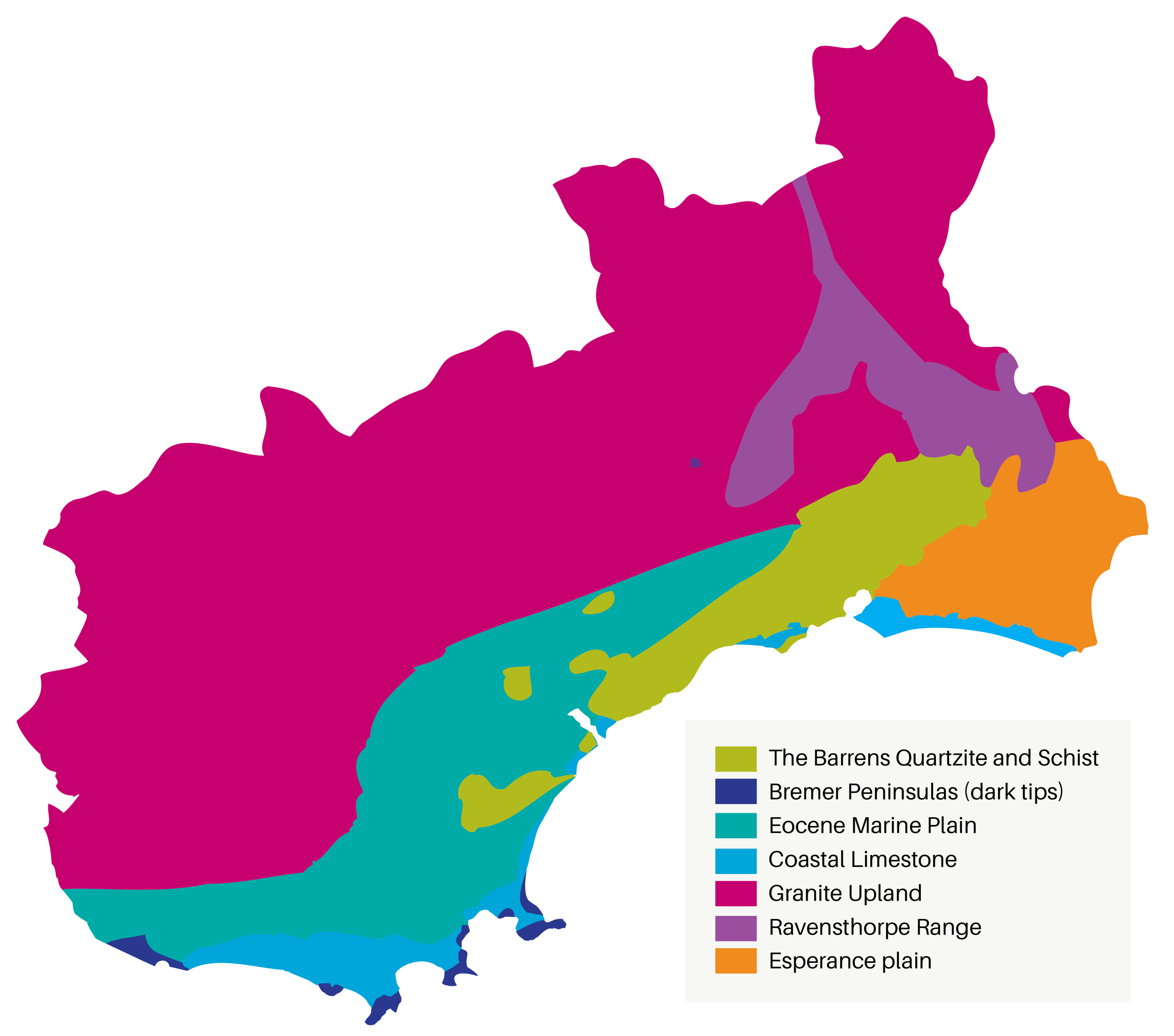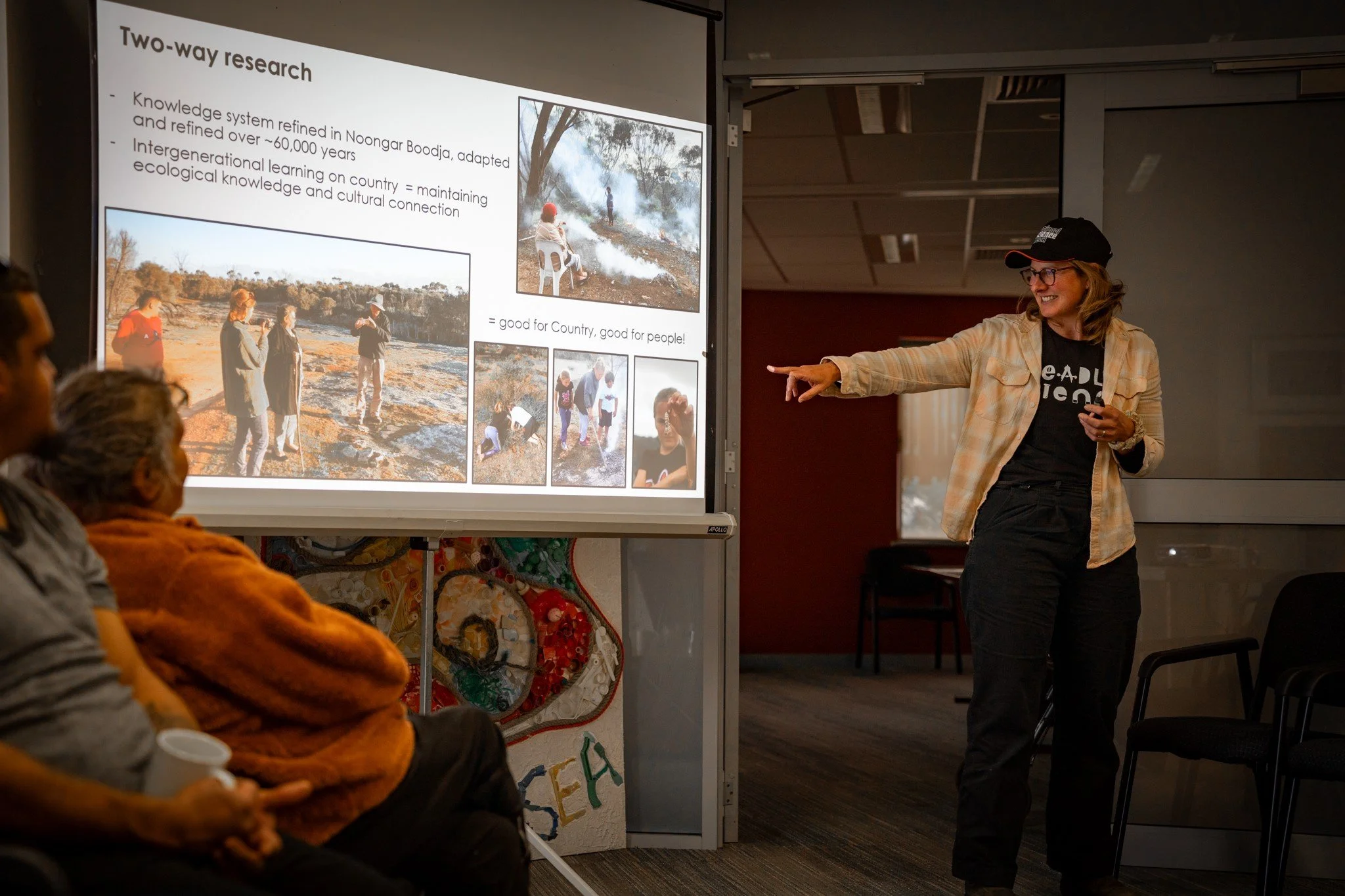Welcome to
Our Fitzgerald Biosphere
The Fitzgerald Biosphere Region is located on the South Coast of Western Australia and is recognised for its high botanical diversity, species endemism and high level of threats.
Located in the internationally recognised biodiversity hotspot of south-west Australia, the Fitzgerald Biosphere surrounds the Fitzgerald River National Park (most of which is contained within the Biosphere core zonation and contains around 20% of WA’s described plant species) and includes surrounding farmland, towns and coastline.
Image 1 Credit: Annie Leitch
Image 2 Credit: Grasslands Films
Image 3 Credit: Annie Leitch
What is a Biosphere Region?
Biosphere Regions are areas of terrestrial (land) and coastal/marine ecosystems, or a combination of all, which are internationally recognised within the framework of UNESCO’s MAB programme. They are established to promote and demonstrate a balanced relationship between people and the environment.
Biosphere Regions are designated by the International Coordinating Council of the MAB Program at the request of the State concerned. Individual Biosphere Regions remain under the sovereign jurisdiction of the State where they are situated.
Collectively, more than 750 Biosphere Reserves around the world are standing to Inspire a positive future by connecting people and nature today that function as models for sustainable development, demonstrating how to harmonise conservation efforts with the needs and aspirations of local communities.
It’s objectives are to:
Conserve biodiversity and cultural diversity
Promote sustainable development by supporting vibrant communities and thriving economies
Facilitate and encourage research, monitoring and education opportunities
Support mitigation and adaptation to climate change, and other global environmental challenges
Zonation
Biosphere Regions pursue these objectives on ground through Core, Buffer and Transition zonation.
The Core is a zone with minimal human activities (except for research and monitoring) aimed at protecting the landscape, ecosystems and species it contains.
Surrounding the core, is an area that acts as a Buffer zone for the core and accommodates collaborative and sustainable human activities such as research, environmental education and training as well as tourism and recreation.
Economic and human development occurs predominantly in the proposed Transition Zone. The proposed Transition Zone includes all private land, built upon or leased public land, Crown lands with mining developments and leases, and the marine component.
Why are we a Biosphere Region?
The Fitzgerald Biosphere Region was designated in 1978 by UNESCO’s Man and the Biosphere (MAB) program for its exceptional natural diversity and largely pristine landscapes.
Globally, the region is recognised as one of the most botanically diverse places on Earth, thanks to its varied geology, landforms, and stable, semi-arid Mediterranean climate.
Upon visiting in 1989, the UNESCO Assistant Director General Dr Bernd von Droste said, “The Fitzgerald River National Park is without doubt the most important Mediterranean ecosystem reserve in the world. It stands out for its scientific, conservation and educational values in the same way that the Galapagos Islands do.”
Barren’s Regelia or Regelia velutina
Image credit: Annie Leitch
Eco Units
Fitzgerald Biosphere Region comprises of eight Ecological units or Eco-Units related by geology, climatic history, drainage, soils and native vegetation:
The coastal quartzite Barren Ranges, the Bremer Peninsulas of the Albany Fraser Orogen gneiss, an Eocene marine plain with spongolite cliffs and gorges, the Corackerup Creek and lower Pallinup valleys in the southwestern corner, coastal limestone ridges and dunes, the granite upland of the southern edge of the Yilgarn Block craton, the greenstone and associated metamorphosed volcanic rocks of the Ravensthorpe Range, and the broad Esperance sandplain with its deep sands and shallow swamps.
These all provide the diversity of soils, vegetation and habitat systems including wetlands, rivers, creeks, sandplains, granite meadows, woodlands, shrublands, kwongan heathlands, thickets and sedgelands.
To achieve successful natural resource management for such an intricate Region it is useful to break it down into smaller parts with common denominators. These eco-units here have been refined by Nathan McQuoid in 2009 for the Fitzgerald Biosphere Region.
They explain the natural layout of the Biosphere’s ecosystems and plant communities. They also cover the reasons why certain plants and animals live there, how they are distributed, and the natural forces that help them survive. By developing a deeper understanding of these units and their processes this enables us to manage and/or restore them along with the habitats they support, more effectively and sustainably.
“The Fitzgerald Biosphere retains just over half (51%) of its native (or remnant) vegetation. ”
It is also home to a large number of threatened fauna including chuditch, dibbler, phascogale, heath mouse, western mouse, tammar wallaby, Carnaby’s cockatoo, mallee fowl, western bristlebird, western whipbird, peregrine falcon, and until 2012 western ground parrot (McQuoid 2017), such that Fitzgerald River National Park is considered to have the most intact fauna of any conservation reserve in southern WA (CALM 1991).
“It is ancient, eroded and subdued yet complex. ”
Carnaby Cockatoo
Image credit: Annie Leitch
The Fitzgerald Biosphere is Noongar Country, and a strong Noongar community resides both within the Fitzgerald Biosphere Region and in nearby towns. Connection with Country is multidimensional and central to Noongar identity and wellbeing. Place-based Noongar understanding of Country interweaves people, specific places, other organisms, and non-living entities in ways often unseen to those outside of this knowledge system.
The Action Plan for Fitzgerald Biosphere Region aims for all of us to honour Country and the culture of Noongar people as its original custodians.
Why are we a Biosphere?
More recently, this region has become known for its agricultural production and mineral extraction, which are primary economic drivers alongside nature-based and cultural tourism. Communities and industries are interconnected with nearby conservation areas, where residents engage in research, learning, and environmental activities. This collaborative mosaic includes two-way science initiatives, behaviour change projects, flora and fauna surveys, recovery and restoration efforts, and climate adaptation research, fostering a shared commitment to conservation.
However, aspects of this natural wealth are vulnerable and at risk. The extensively cleared landscape, with its fragile and saline soils, presents significant ecological and sustainability challenges. While a comprehensive, adequate and representative public conservation estate such as the Fitzgerald River National Park is important in conserving biodiversity, it is also essential that there is both effective conservation of vegetation on private land and sustainable production systems in the zones outside the Core area, in this case the Buffer and Transition zones. (FRY 2010) We strive for sustainable agricultural land use that underpins the conservation of the biodiversity values.
The threatening processes[ii] of most significant concern to threatened species and ecological communities in the Fitzgerald Biosphere are:
Inappropriate fire regimes
Phytophthora cinnamomi and other plant diseases
Predation by feral cats and foxes
Environmental weeds
Loss, fragmentation and degradation of habitat
Competition and habitat modification by invasive fauna
Salinisation or altered hydrology
Stochastic (chance) events
Climate change
Activities in the Biosphere are now supported by a collective of organisations and individuals - the Fitzgerald Biosphere Community Collective (FBCC) that has seen great strength in the collaboration and partnerships that have developed through the renomination process.
[ii]Department of Environment and Conservation, (2012). Fitzgerald Biosphere Recovery Plan: A Landscape Approach to Threatened Species and Ecological Communities Recovery and Biodiversity Conservation, Western Australian Department of Environment and Conservation, Albany
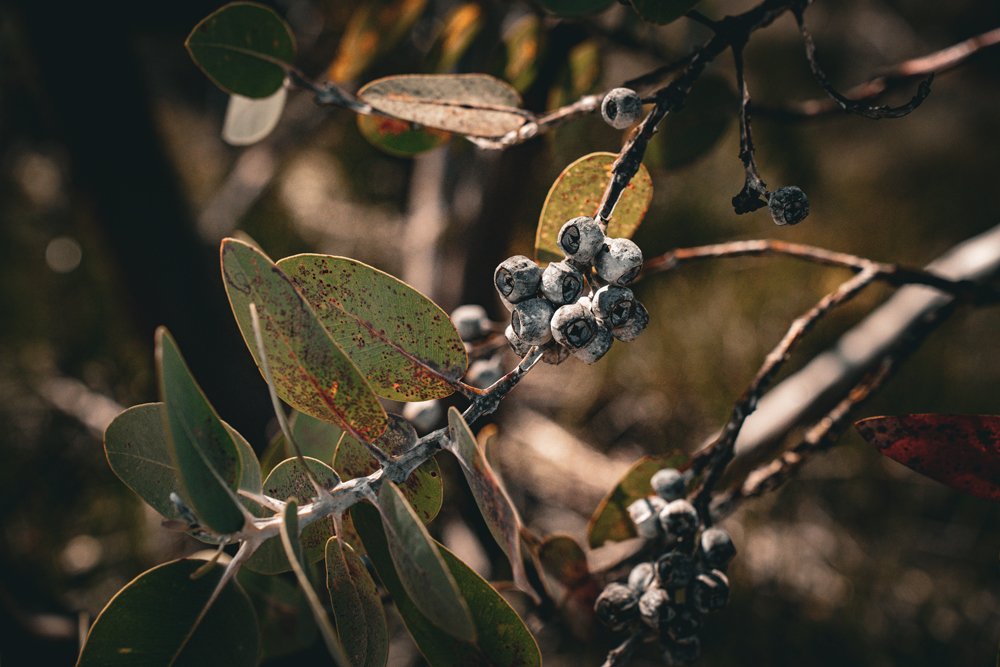
History of the Fitzgerald Biosphere
History
The Fitzgerald Biosphere was first designated under the UNESCO ‘Man and the Biosphere’ program in 1978.
In 1995, an International Conference on Biosphere Reserves held in Seville formally defined and designated a set procedure for the recognition and inclusion of potential biosphere reserves.
The criteria for biospheres to exist under the Man and Biosphere Programme changed in 2009, necessitating a review of the Fitzgerald Biosphere’s status. The Fitzgerald Biosphere was required to be renominated under the new criteria to retain its designation under the program. As part of this process the biosphere boundaries had to be redrawn and a series of other consultations had to be carried out. The Biosphere implementation Group (BIG) was formed in 2010 to do this.
The BIG comprised the Shires of Jerramungup and Ravensthorpe, Department of Biodiversity and Cultural Attractions, Fitzgerald Biosphere Group, Ravensthorpe Agricultural Initiative Network, South Coast NRM, Friends of the Fitzgerald River National Park, Department of Primary Industries and Regional Development, the GSDC and the South West Land and Sea Council, with input from stakeholders in the fishing and mining sectors. (Photo # 6 above)
In March 2017, a revised renomination form was submitted to The United Nations Education, Scientific and Cultural Organisation (UNESCO) Man and Biosphere (MAB) Programme for an expanded Fitzgerald River National Park Biosphere Reserve. The original Biosphere Reserve design, first listed in 1978, did not meet the 1996 Seville Criteria for Biosphere Reserves, which requires core, buffer and transition zoning.
The renomination includes these zones around the core of the majority of Fitzgerald River National Park incorporating State Waters as a marine component and prescribes the new name of Fitzgerald Biosphere.
The UNESCO International Advisory Committee for Biosphere Reserves (IACBR) accepted the revised form, after changes recommended to the buffer design were made. The IACBR recommended our renomination for examination and endorsement to the MAB International Coordinating Committee. The recommendation was endorsed at the meeting of June 12-15th 2017 after many years of effort.
Official Proceedings for the launch were held at Hopetoun and East Mount Barren lookout, Fitzgerald River National Park on Thursday 9 November 2017. (Photos above)
On 23 March 2018, the successful renomination and launch of the Fitzgerald Biosphere was celebrated. The launch followed seven years of work to prepare and submit the renomination of the Biosphere under the UNESCO ‘Man and the Biosphere’ program.
After the successful renomination, the BIG went through a strategic planning period throughout late 2017 and 2018, restructuring into the Fitzgerald Biosphere Community Collective (FBCC, or ‘the Collective’) to build on the collaboration and partnerships developed through the renomination process. The FBCC is the representative body that will work collaboratively and provide leadership and direction in seeking and developing opportunities to achieve the Fitzgerald Biosphere Action Plan.
2017 Fitzgerald Biosphere Re-nomination
Image Credits: Amanda Keesing
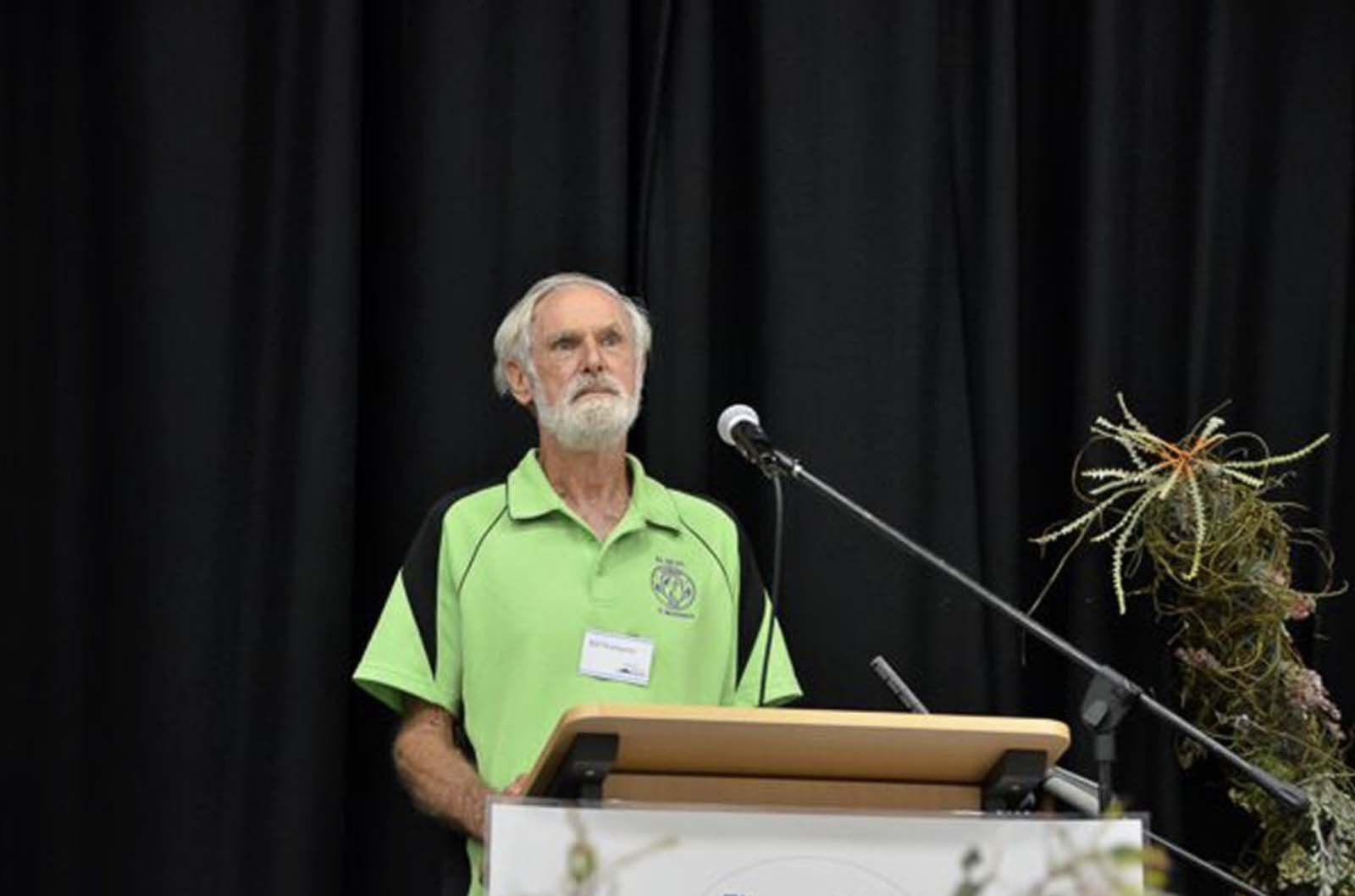
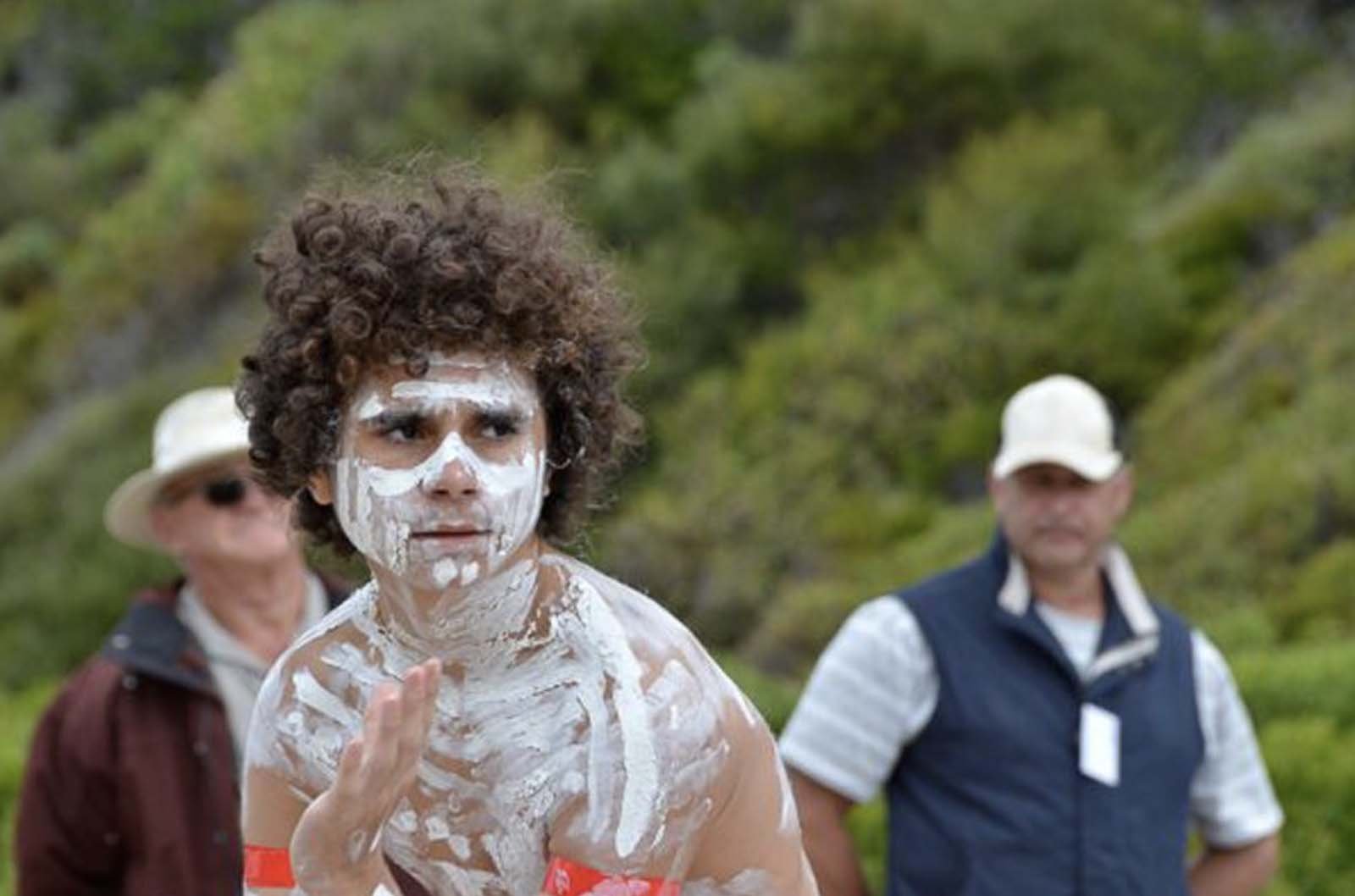
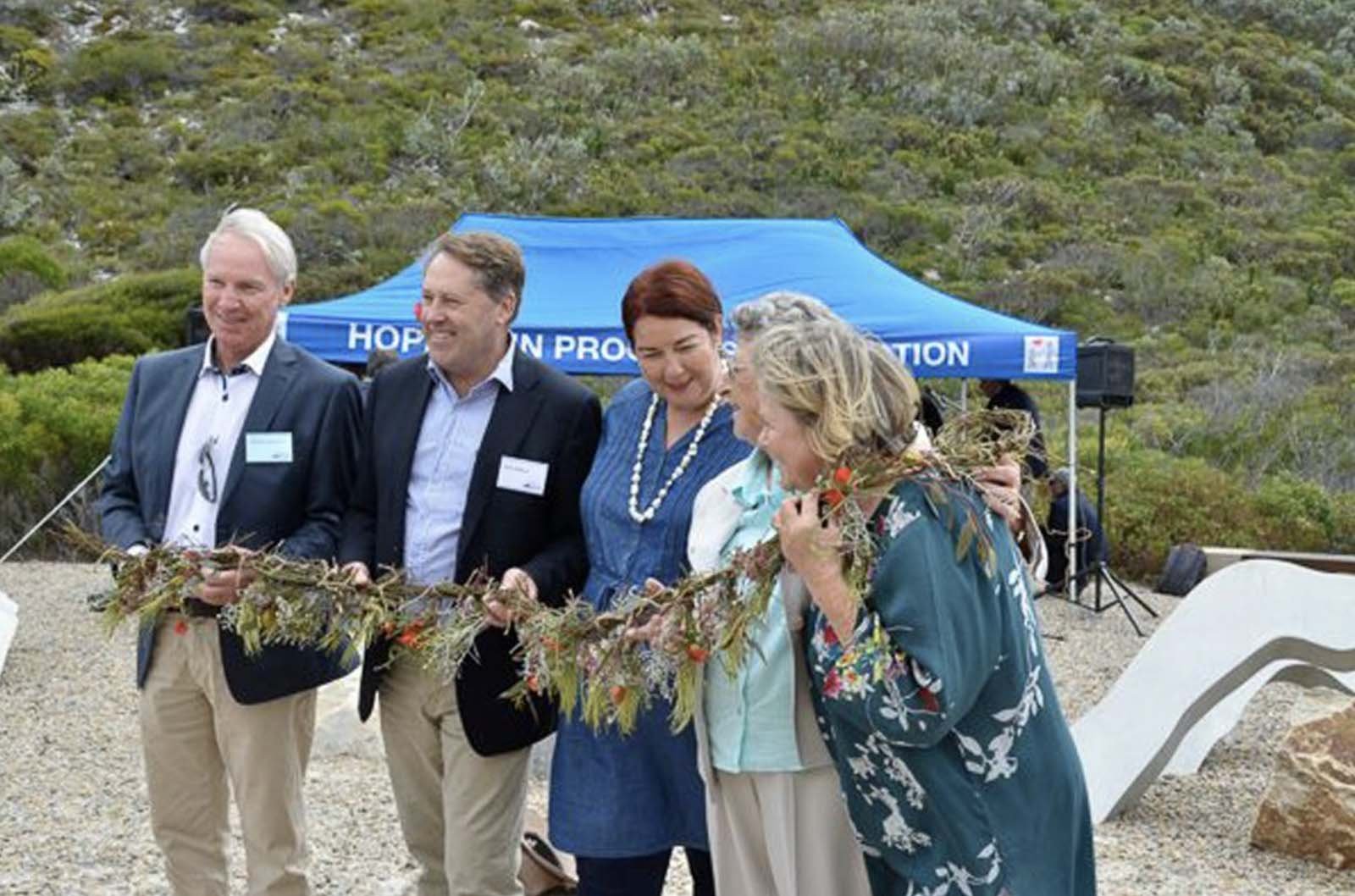


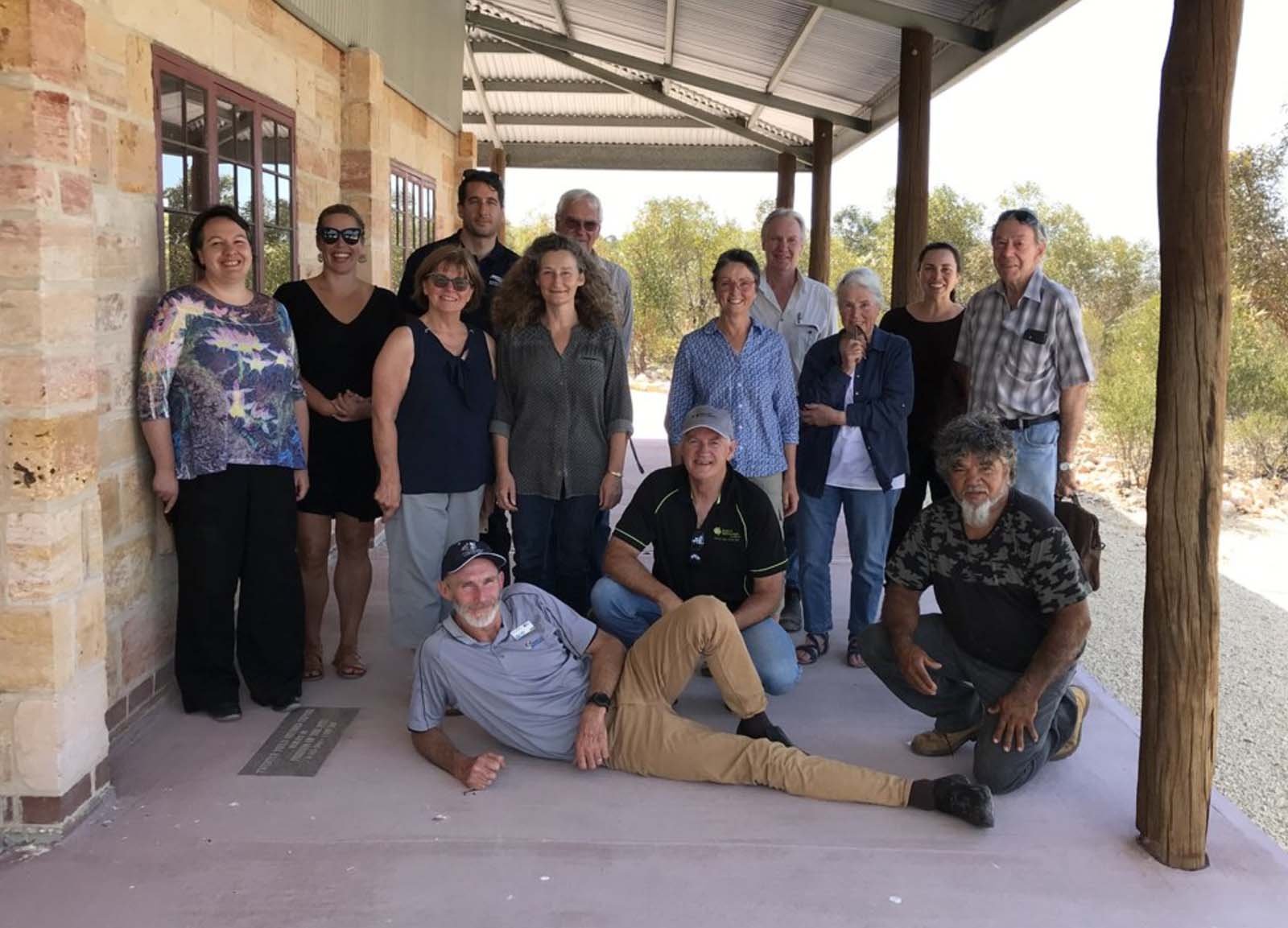
FBCC is born!
MAB Objectives

The Fitzgerald River National Park is without doubt the most important Mediterranean ecosystem reserve in the world. It stands out for its scientific, conservation and educational values in the same way that the Galapagos Islands do.
~ UNESCO Assistant Director General, Dr Bernd von Droste, 1989 ~

